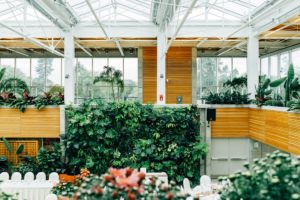About Administrator
This author has not yet filled in any details.So far Administrator has created 5 blog entries.
Project 2- Crypto Impact Potential
Administrator2020-03-26T19:00:41-05:00
Crypto Impact Potential
DESCRIPTION
CrowdDoing crypto team has researched crypto tokens that have broader social impact potential in sustainability and anti-poverty areas. Our goal is to educate the world on the risks and opportunities that crypto tokens present and help mitigate risks associated with crypto tokens. Through extensive research, we have identified and analyzed several projects that are leveraging blockchain and crypto solutions to address social challenges, to help the unbanked, to supply renewable energy, to support medical research and to develop a sustainable supply chain, etc. CrowdDoing team has put together a draft index of these crypto portfolios to track their overall performance and impact investment potential. We are working to publish the index globally and aim to track their financial performance while attempting to understand and measure those projects’ impact potential. Our community draws from various backgrounds with all levels of expertise, including writers, technologists, finance, operations, cryptographic enthusiasts, engineers, students and others. Through this initiative, participants de-risk the impact potential of crypto to achieve social good while learning together.
ACCOMPLISHMENTS
Our team has identified dozens of crypto projects with impact potential. Our team has developed a portfolio of sustainability crypto impact projects and a portfolio of anti-poverty crypto impact projects. Our team has evaluated tokens that are liquid associated with these projects and removed bad actors from the baskets through a market manipulation analysis. Our team has partially evaluated the risk and feasibility of each crypto strategy for achieving sustainability and anti-poverty goals.
VOLUNTEERS INVOLVED
- Roger Yu, Project Manager
- Mintra Srimanchanda, Sustainability & Anti-Poverty Index Creation
- Muhammad Azam, Publications
Project 3 – Forest Fire Prevention
Administrator2020-03-26T19:03:16-05:00
Forest Fire Prevention
Partner
CrowdDoing Impact Potential Venture Lab & Project Heather
DESCRIPTION
CrowdDoing and Project Heather propose launching a prevention derivative with two new stakeholders:
(a) contingent payers who pay in proportion to the reduction in risk, and
(b) impact investors who finance social innovations in which their return is similarly proportional to the reduction in risk.
It will build on existing precedents for contingent contracts involving social- innovation-based risk prevention. A spectrum of forest fire risk prevention approaches are available: from creative new social innovations to well-established interventions. The forest fire risk prevention derivative would first survey existing forest fire prevention interventions in Greater Sacramento with an eye towards which ones might be suitable to support and expand. It would then review global social innovations that might be relevant to Northern California to determine which to replicate. Entities involved in risk management and risk securitisation, from insurers to reinsurers to retrocessionaires, ought to welcome the chance to share liability proportionally through a commons of prevention innovations. The prevention derivative can expand as more institutions and individuals join as contingent payers and impact investors in order prevent a larger portion of collective risk. Payments by private and public institutions to support prevention derivatives can be in-kind, through services, and/or financial. The prevention derivative will identify comparison regions in order to assess relative risk prevention controlling for factors such as temperature, humidity, wind intensity, tree types etc.
ACCOMPLISHMENTS
Our team has researched the risk transfer markets to determine if risk prevention securitization is feasible. Initial analysis suggests that liquid risk prevention markets are possible through social innovation. Initial research has focused on flood prevention via coral reefs and fire prevention.
Project 4 – Biophelia in Hospitals / Living Walls & Vertical Gardens
Administrator2020-03-26T19:04:25-05:00
Biophelia in Hospitals / Living Walls & Vertical Gardens
DESCRIPTION
Plant proximity has been shown to be beneficial in multiple ways including from air pollution reduction & stress reduction. These leverage points have been demonstrated to have positive medical consequences in terms of reduced opioid addiction, reduced medical mistakes, prevention of diseases & conditions such as hypertension & related complications, asthma, heart attacks, strokes, cancer, diabetes, alzheimers & dementia, schizophrenia, rheumatoid arthritisacute pancreatits, chronic kidney disease. We have also evaluated the consequences of proximity to plants on hospital staff presenteeism, absenteeism & turnover rates. We have concluded that under any scenario we have tested, a network of plant walls & vertical gardens and other uses of plants could pay for themselves in as little as two years and provide beneficial outcomes for more than 20 years.
Plant proximity is understood by the scientific community through the lens of “biophelia”. Biophelia is the visual & sensory experience of plants and proximity to plants. You have expertise relevant to reviewing for validity and applicability our simulation of biophelia in hospitals. Our draft aims to forecast the social outcomes that could be caused by varying scenarios of biophelia in hospitals. We have identified more than 100 outcomes that in principle can be attributed to biophelia. We present here in draft for review a partial simulation of this impact potential. We have aimed to consider prospective benefits to all stakeholders. We have structured this to be a flexible model that can be adapted to any hospital circumstance. We’ve aimed to identify both health outcomes, environmental outcomes financial outcomes.
ACCOMPLISHMENTS
Our team has a draft financial model of how vertical gardens pay for themselves in libraries and hospitals. Our team has a thesis of how biophelia can save hundreds of lives per hospital per twenty years. Our team has identified more than one hundred diseases that are preventable thorugh biophelia density in hospitals being increased.
Project 5 – Zero Subsidy Affordable Housing
Administrator2020-03-26T18:46:54-05:00
Zero Subsidy Affordable Housing
DESCRIPTION
This project is based on the idea that if people could buy only a percentage of the appreciation value that they can afford, and still secure stable access to a home, up to half of homelessness in dense urban regions could be prevented. Home buyers today buy 100% of a home at the time of purchase,and borrow money through a mortgage to be able to afford to do so. But this purchase masks the fact that they are buying two things at the same time- 100% of the future sale price of a home (so-called appreciation value), and 100% of the usage rights of that home while they are living there (so-called use value). If people could buy only the percentage of appreciation value that they can afford, and still secure stable access to a home, half of homelessness in dense, coastal urban regions such as the Bay Area, New York, Seattle could be prevented.
ACCOMPLISHMENTS
Our team has reviewed several financial theories, and the Stanford University model of providing zero-subsidy affordable housing for off-campus professors to develop a financial model. One of the theories reviewed was how publicly traded holding companies can use accretion, dilution and stock swapping to secure private assets through creating access to liquidity and diversification. Our team has also reviewed how liquidity and diversification can support the subsequent achievement of housing access. If zero-subsidy affordable housing was at scale, then anyone who could buy one-quarter of a home’s appreciation value in locations such as the Bay Area, Seattle, NYC, and secure access to stable housing. The financial model would replicate the theories studied and demonstrate the feasibility of the homeless prevention thesis. Our team has reviewed how publicly traded holding companies can use accretion, dilution and stock swapping to secure private assets by creating access to liquidity and diversification. Our team has reviewed how liquidity and diversification in phase one can support the achievement of housing access in phase two. If zero-subsidy affordable housing was at scale, then anyone who could buy one-quarter of a home’s appreciation value in a high growth, coastal, high inequality city could then secure access to stable housing.



